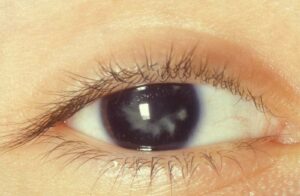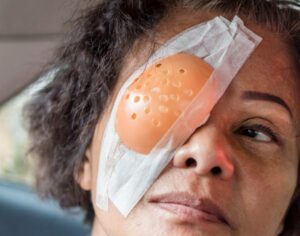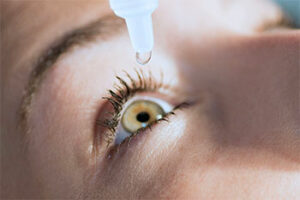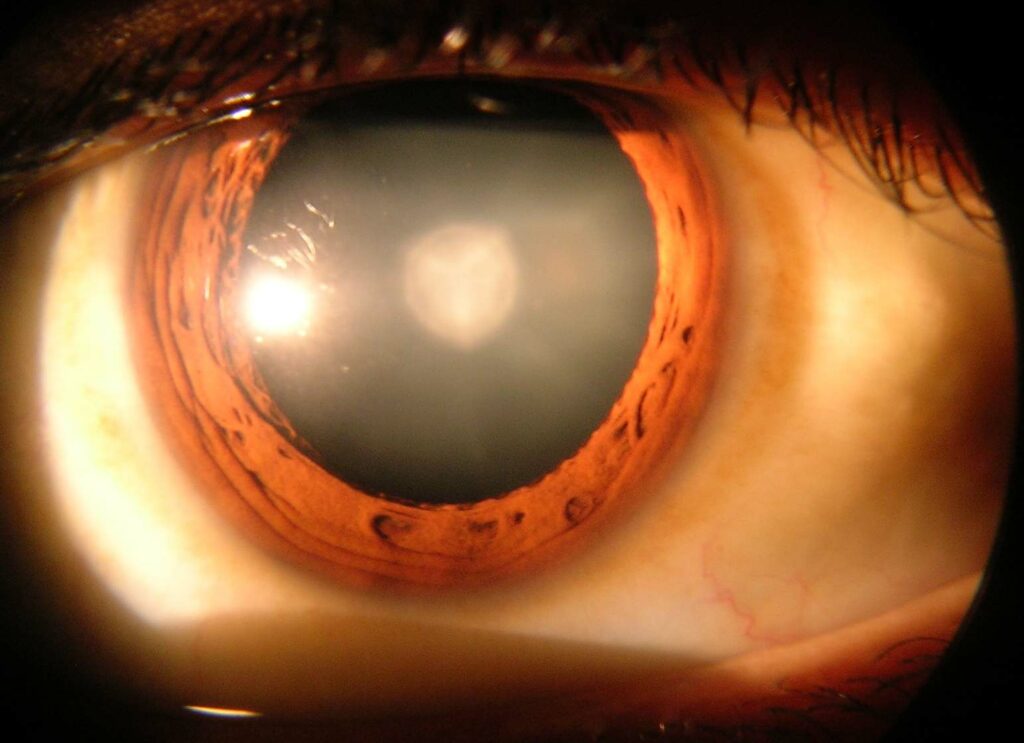If you have been told by your doctor that you have secondary cataracts, it is important to understand what that means. A secondary cataract is a condition in which the lens of the eye becomes cloudy after surgery to remove a cataract. This can cause vision problems and even blindness if not treated. In this blog post, we will discuss what secondary cataracts are, their symptoms, and how it is treated.
Contents
- 1 What Is A Secondary Cataract?
- 2 Symptoms Of Secondary Cataracts
- 3 Is Secondary Cataract A Complication Of Cataract Surgery?
- 4 What Are The Possible Causes And Risk Factors?
- 5 How Is It Diagnosed?
- 6 Should I Consider Surgery To Remove A Second Cataract?
- 7 What Should I Expect After Surgery?
- 8 How Can You Prevent Secondary Cataracts?
- 9 Conclusion
What Is A Secondary Cataract?
 A secondary cataract is a type of vision impairment caused by earlier cataract surgery. It is caused by a secondary clouding of the eye’s lens, called an after-cataract. Secondary cataracts most commonly occur months to years after successful cataract surgery. And can be more difficult to treat than the initial cataract removal.
A secondary cataract is a type of vision impairment caused by earlier cataract surgery. It is caused by a secondary clouding of the eye’s lens, called an after-cataract. Secondary cataracts most commonly occur months to years after successful cataract surgery. And can be more difficult to treat than the initial cataract removal.
It is estimated that up to 14% of all cataract surgeries may be followed by a secondary cataract. A variety of factors can increase the risk, including age at the time of surgery, pre-existing diabetes or glaucoma, and additional eye diseases or injuries.
Therefore, if you’ve had cataract surgery, it’s important to discuss the potential for a secondary cataract with your eye doctor. Only a professional can accurately diagnose and recommend the best treatment for a secondary cataract.
Symptoms Of Secondary Cataracts
The most common symptom of a secondary cataract is clouded vision. Other symptoms may include:
- Increased sensitivity to light and glare
- Blurry vision at all distances
- Faded colors, especially around the edges of objects
- Poor night vision
- Halos around lights
- Double vision in one eye
These are just some of the symptoms associated with secondary cataracts. It’s important to see your eye doctor if you experience any of these symptoms, as they could be a sign of other vision-related conditions or diseases. In addition, some other signs might include:
- Development of a grey, white or yellow-colored membrane behind the lens
- A decrease in vision acuity
- Difficulty reading or seeing close-up objects
If you notice any of these symptoms, it’s important to contact your eye doctor right away. They can provide a comprehensive eye exam and diagnose the condition.
Is Secondary Cataract A Complication Of Cataract Surgery?
 If you’ve undergone cataract surgery, you may be at risk of developing a secondary cataract. This is the clouding over of the eye lens capsule after cataract surgery. Usually, this occurs sometime between six months and two years after the original surgery.
If you’ve undergone cataract surgery, you may be at risk of developing a secondary cataract. This is the clouding over of the eye lens capsule after cataract surgery. Usually, this occurs sometime between six months and two years after the original surgery.
So, yes one of the common complications of cataract surgery is to develop a secondary cataract. The reason behind this is that the clear lens capsule that holds the artificial intraocular lens (IOL) in place can become cloudy, affecting vision.
However, there are also some contributing factors that may include:
- Inflammation or infection after the surgery
- A reaction to medications used during the procedure
- An accumulation of proteins in the eye lens capsule
- High levels of UV exposure
Secondary cataracts can affect vision in the same way that regular cataracts do, by blurring and distorting images. If left untreated, they can lead to a decrease in vision over time.
What Are The Possible Causes And Risk Factors?
Secondary cataracts can be caused by a number of factors, including:
- Aging – age-related changes within the lens can cause clouded vision.
- Medications – some medications, such as steroids and antihistamines, can cause a buildup of protein in the lens and lead to secondary cataracts.
- Eye injury – trauma to the eye can cause inflammation or damage to the lens that subsequently leads to secondary cataract formation.
- Medical conditions – certain medical conditions such as diabetes and some genetic disorders can increase an individual’s risk of developing a secondary cataract.
In addition to these possible causes, there might be other risk factors that increase the chances of developing a secondary cataract. These include:
- Poor nutrition – nutritional deficiencies, particularly certain vitamins and minerals, can speed up the progression of lens deterioration.
- Smoking – smoking has been linked to eye damage, including the development of cataracts.
- Excessive alcohol consumption – drinking too much alcohol can cause damage to the lens and contribute to secondary cataract formation.
Overall, these can be risk factors for an individual to consider when it comes to secondary cataract formation. It is always best to consult with an eye care specialist if you have any concerns
How Is It Diagnosed?
The diagnosis is always an essential part of any medical condition. In the case of secondary cataracts, the diagnosis is mainly made by an ophthalmologist through a comprehensive eye exam and thorough history-taking.
The doctor will also examine the back of your eyes using an instrument called an ophthalmoscope to look for any signs or symptoms of secondary cataracts. More often than not, the best way to differentiate between a secondary cataract and other types of vision problems is to have a dilated eye exam. This means that your pupils will be dilated for an extended period of time so that the doctor can get a better look at the structures behind them.
Once the diagnosis has been made, it is easier to get the proper treatment. Therefore, do not hesitate to see your doctor if you experience any changes in your vision.
Should I Consider Surgery To Remove A Second Cataract?
As with any medical condition, it is important to speak with your doctor about your options when considering surgery for secondary cataracts. Generally speaking, a second cataract can typically be removed surgically. But as this condition is itself developed due to prior surgery. It is important to weigh the risks and benefits of any treatment.
Your doctor will be able to provide you with more information. And determine if surgery is the right course of action for you. Also, if you have a pre-existing eye condition, your doctor will want to closely monitor the progress of your secondary cataract and any potential risks involved in undergoing surgery.
What Should I Expect After Surgery?
 After undergoing surgery to remove a secondary cataract, it is important to practice self-care and follow instructions provided by your doctor. Your vision may be temporarily blurry or you might experience some eye discomfort. However, these symptoms should clear up within a few days of the procedure. It is also important to wear sunglasses when outdoors, as bright light may irritate your eyes following surgery.
After undergoing surgery to remove a secondary cataract, it is important to practice self-care and follow instructions provided by your doctor. Your vision may be temporarily blurry or you might experience some eye discomfort. However, these symptoms should clear up within a few days of the procedure. It is also important to wear sunglasses when outdoors, as bright light may irritate your eyes following surgery.
In order to increase the chances of successful recovery, it is important that you follow instructions given by your physician concerning medications, eye drops, and ointments. You should also not hesitate to contact your doctor if you experience any new or worsening symptoms after the surgery.
The outlook for people with secondary cataracts is generally very good. As long as they follow their doctor’s instructions closely and allow time for proper healing after surgery.
How Can You Prevent Secondary Cataracts?
Yes, it is possible to prevent secondary cataracts from forming. The most important step you can take is to maintain a healthy lifestyle and regularly monitor your vision. Follow these tips for optimal eye health:
- Quit smoking if you do smoke, as studies have linked smoking to an increased risk of developing age-related macular degeneration (AMD) and secondary cataracts.
- Maintain a healthy diet rich in antioxidants, vitamins, and minerals that are important for eye health, such as those found in green leafy vegetables, carrots, sweet potatoes, and other colorful fruits and vegetables.
- Wear sunglasses when outdoors to protect your eyes from UV rays that can increase the risk of developing cataracts.
- Have regular comprehensive eye exams to catch any potential vision problems early on and treat them accordingly.
- Use protective eyewear during activities that can put your eyes at risk of injury, such as sports or working in hazardous environments (e.g., construction sites).
- Be sure to take any medications or follow a treatment plan prescribed by your doctor to treat AMD or other eye conditions that could increase the risk of secondary cataracts.
By taking these preventative steps, you can help ensure your eyes stay healthy. And reduce your risk of developing secondary cataracts. If you have any concerns about your vision, be sure to consult your doctor or an optometrist. By catching problems early on, you can take steps to prevent vision loss and keep your eyes healthy for years to come.
Conclusion
In conclusion, secondary cataracts are a common type of cataract and can occur in eyes that have already had surgery for a primary cataract. These are usually caused by Posterior Capsule Opacification (PCO) and require laser treatment or a second cataract surgery to correct. It is important to visit your eye doctor regularly after cataract surgery to ensure that any secondary cataracts can be treated as early as possible.
If not treated in a timely fashion, secondary cataracts can cause significant vision loss and adversely affect the quality of life. So, seek help today and don’t wait until it becomes a bigger problem.
For more information and guidance, be sure to contact Mantra Care. At MantraCare we have a team of experienced eye surgeons, who will be happy to answer any questions on cataract surgery. Call us at +91-9711116605 for any inquiries.
